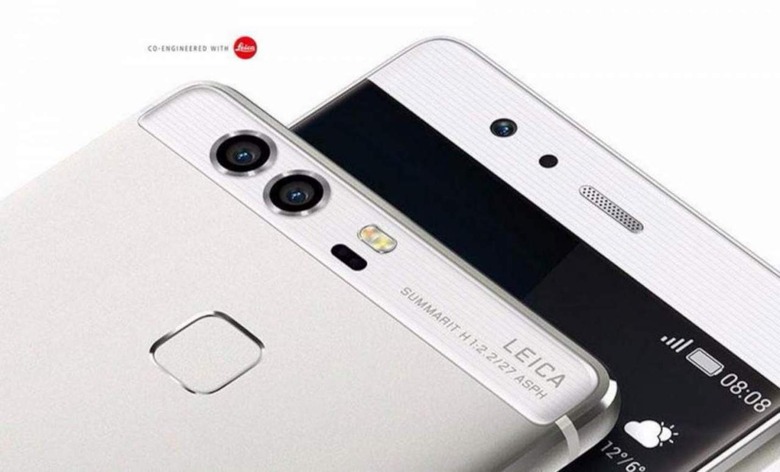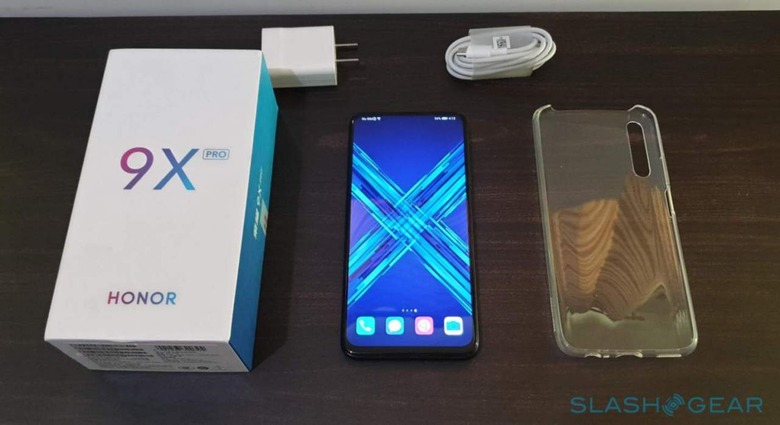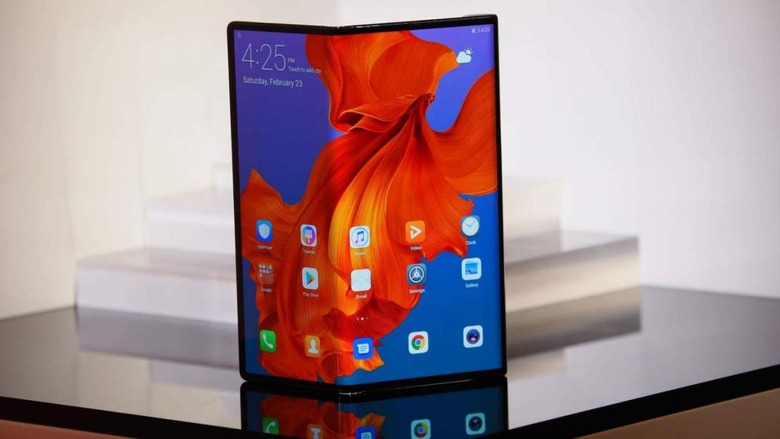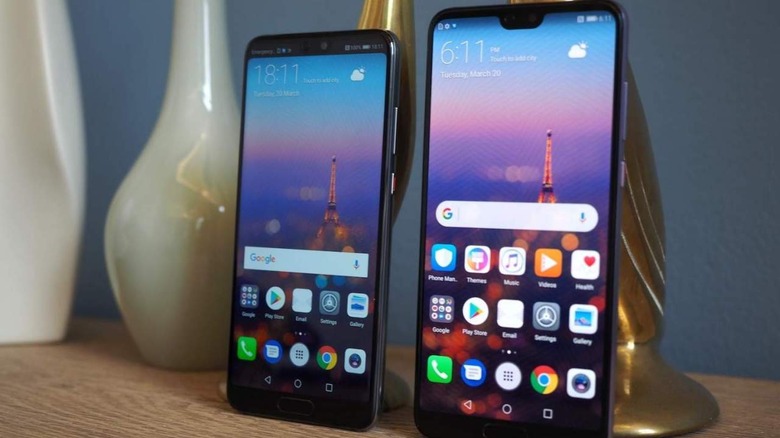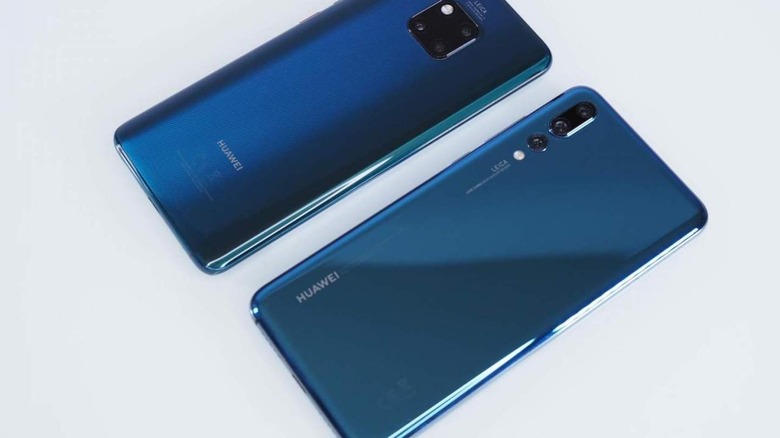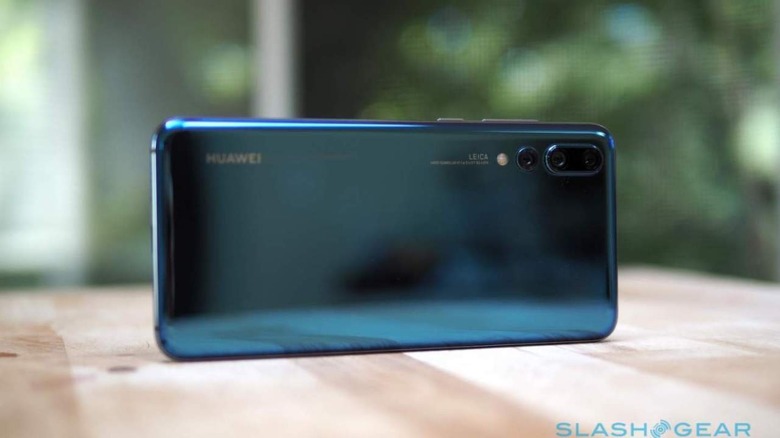The 5 Best And 5 Worst Things About Huawei Smartphones
There was a time, not too long ago, when Huawei almost took over the smartphone world. Bagging marketing contracts with big Hollywood names like Henry Cavill, Scarlett Johansson, and Gal Godot, the company seemed poised to be the next big thing in the global market for mobile phones. When it managed to surpass Apple in global sales numbers back in 2019, its victory against Samsung to become the top-selling smartphone provider in the world was almost assured.
But like its astronomical rise, Huawei's fall from grace was equally dramatic, leaving newcomers to the smartphone market wondering what the fuss is all about — and if Huawei's phones were even worth considering. To illustrate the company's story, controversy, and legacy, we take a look at some of the things that made and still make Huawei's phones quite the catch, as well as reasons to stay away from the company unless you live in China. Let's look at what Huawei did right and wrong to end up where it is today.
We start with what Huawei got right.
Huawei may have already been big in China, but its growth in international markets suggests that it was at least doing some things right (via Statista). That it was able to penetrate the US market enough to make its political critics worry is also a testament to its efforts. Huawei phones feature many things, of course, but there are a few things that stand out that made them worth the risk of investing in the Chinese brand. This begins with its photo capabilities.
1. Exceptional photography
Although it didn't start out as a champion in this sphere, Huawei's phones have long been considered the top of the class when it came to smartphone photography. Some might consider the Huawei P9 from 2016 as the model that started this trend. It was, coincidentally, also one of the first phones to sport a dual-camera system (though the HTC One M8 predated them in 2014 and the gimmicky LG Optimus 3D in 2011).
Ever since then, Huawei has been blazing the trail in smartphone cameras, beating Apple and Samsung every year, even after the two manage to catch up for just a while. Forbes noted that the brand has the best imaging sensors and output in the market, at least according to some benchmarks.
2. Value for the price
Chinese-branded products have long had the stigma of being cheap in price and quality, but smartphone makers like Xiaomi, OPPO, and Huawei have been dispelling that misconception in the past few years. Huawei, in particular, has been catching up with its peers on the top rungs of the market ladder, and its phones have definitely earned the "premium" moniker in more ways than one — throughout China and elsewhere, according to South China Morning Post.
Huawei's flagships are anything but cheap, especially compared to the likes of OnePlus or even Xiaomi. Models run anywhere from about $600 to over $1,000 (via Android Authority). What gives it some distinction is that you are really getting your money's worth. Until the dominos started to fall, Huawei's Kirin chips could run head to head with the latest Qualcomm Snapdragon and Samsung Exynos. Huawei didn't skimp on memory and battery either, and, of course, there are those excellent cameras. With prices being equal, Huawei's top contenders could stand proud against the latest Samsung Galaxy and Apple iPhone and might even surpass them when it came to taking photos.
3. Choice
Huawei's top smartphones might be as expensive as a Galaxy or iPhone, but those aren't the only phones that the company offers. Beating Samsung at its own game, Huawei models are diverse and vary for different market tiers and budgets. And that's not even counting the ones that its former subsidiary Honor sells.
That is part of what gave Huawei its success in multiple global regions. It didn't focus solely on a single demographic or price range but threw everything it could at everybody, as the company's product list makes clear. Of course, that doesn't mean that those in the mid-range will get the same experience as those with more expensive models, but brand familiarity, not to mention the same software features, goes a long way in establishing trust with consumers.
Of course, it's also a double-edged sword, and there are times when having too many options can be paralyzing for buyers. Fortunately, there are quite a few "winners" in each category, so it doesn't always feel debilitating. That said, not all those phones are treated equally, and some get software updates more often and longer than others.
4. Daring to be different
Huawei has had the advantage of being a tech giant, and as such has had plenty of resources to throw around to play with ideas (via CNN). While it didn't immediately jump on short-lived trends like curved phones and modular phones, it did embark on a few experiments that opened the doors to possibilities.
It took risks in playing around with smartphone designs, for example, particularly with the camera bump on phones' backs (via Business Insider). From vertical columns to large circles to squares, Huawei spurred some trends in smartphone designs, even if they didn't stick around very long. Of course, innovation in mobile imaging is its big thing, which is impressive considering it doesn't have the same resources or history as Samsung and Sony in that market (via Forbes).
Huawei's most recent bold bets naturally had something to do with foldables. It was one of the few to actually believe in the "outie" design exhibited by the Huawei Mate X and Mate Xs. Now it has released a Huawei P50 Pocket that will put a unique spin on the foldable clamshell design, according to Tech Radar, though it remains to be seen how long that will last as well.
5. EMUI
Chinese smartphone makers have been criticized for their heavy-handed customizations on top of Android (via The Verge). Huawei is, unsurprisingly, part of the group, but its EMUI operating system spin is more than just a cosmetic skin. For years, it has been adding value to stock Android in ways that Google would probably never allow into its codebase.
EMUI has long allowed features like having two separate instances of the same app installed, customizable themes, memory cleaners, battery optimizers, game performance modes, and more, the company noted. Some of these have now become staples in other manufacturers' ROMs as well, but it wasn't always the case before. Huawei definitely helped pave the path for those, even if it's now forgotten by history.
There are cases where Huawei might look like its following Samsung's lead, but it is also perhaps the only one bold enough to do so. The ability to use a phone as a desktop when connected to an external monitor, for example, is still a rare ability. Currently, Huawei is also heavily advertising the special connection its phones have with its laptops, something mirroring Samsung's preferential treatment on Windows.
Now, for how Huawei fell from grace.
1. EMUI Bloat
Alas, Huawei's conquest of the smartphone world has never come to pass. Its downfall wasn't exactly due to technical or technological problems with its products unless you count the alleged crimes committed by the company (via Quartz). There have always been reasons to steer clear of the company's phones, but recent drama with the U.S. has only made its flaws even more pronounced.
As powerful and flexible as EMUI is, it is also pretty heavy in terms of content. Unlike Samsung these days, Huawei has kept to having its own app for everything and having those pre-installed, according to Tech Advisor. In a way, that actually worked in its favor when it had to move away from Google-certified Android. But for years, the experience of using EMUI on Huawei's Android phones was anything but lightweight.
All these changes applied on top of Android did have consequences in the long run, especially when it comes to software updates. Huawei was never the fastest or most consistent when it came pushing out Android updates, big and small alike, and part of that can be blamed on the heavy-handed customizations that Huawei has made. Of course, that is almost moot today since Huawei has gone ahead with Harmony OS (via The BBC), but it still presents a big hurdle to keeping up with the company's commitment to continue supporting its Android-based phones still in the market.
2. Isolated Ecosystem
Just like Samsung, Huawei wanted to build a kingdom of its own to rival Apple (via CNBC). That meant building an entire ecosystem of devices, software, and services that worked tightly together, almost to the exclusion of others. That dream actually became a necessity when it got shut out of Google's kingdom and other American products. It seems to be working for the company and its customers, at least for those with access to Huawei products (more on that later).
Unfortunately, that also means that investing in Huawei's products might risk getting isolated from others outside its bubble. Although technically still Android underneath, Huawei's new Harmony OS mostly operates on its own away from the rest of the Android world. That nice integration with Windows laptops is also only available with Huawei's Windows laptops, per the company's website. Of course, nothing's stopping anyone from buying Huawei products individually, but the switch to its own mobile OS has made it a bit harder for those phones to interoperate with the rest of the world.
3. Availability
There is almost an embarrassment of riches when it comes to the number of Huawei models available on all tiers, as the company's website makes clear. That said, not all those are available in all markets (via Business Insider). In the typical esoteric decision-making processes that phone companies use, Huawei doesn't sell some of its high-end products in some markets while depriving others of its mid-range phones.
Admittedly, that has always been the case with Huawei phones, but the past two or three years have added another hurdle in Huawei's path. It no longer sells its smartphones in the US, as is noted above, which deprives it of one of the biggest markets in the world. While Xiaomi proved that it could make it big without the U.S., Huawei was abruptly cut off from a crucial source of profits. Along with restricted or almost no access to its usual hardware components and software like Google apps, the effects on Huawei's position in the global smartphone market were pretty devastating.
For consumers, this means that it's almost impossible to get their hands on Huawei's latest and greatest. Even if they could, it wouldn't be advisable because of concerns about network compatibility (via The Washington Post). This sadly means that buyers in the US are also deprived of some of the best smartphone cameras in the market, though Huawei's reign might not last much longer anyway.
4. Suspicions
Like any other giant company, Huawei has always been accused of many things, but allegations about its ties with the Chinese government have so far been the most damning. Being placed in the U.S. Entity List alone already deprives it of the resources it needs to make and sell its usual products, but receiving the same snub from other countries puts more nails in its coffin. Huawei has always maintained its innocence, of course, but it isn't really the first or only time it has been accused of shady business practices.
From espionage to industrial theft, Huawei has been accused of it all. It hasn't been convicted of those yet, at least not in U.S. courts, but the mountain of unresolved cases hangs over its head like Damocles' sword. This brings us to the biggest chink in Huawei's armor.
5. Uncertainty of the future
There are just too many things going on with Huawei these days that it's hard not to feel uneasy when trying to make a long-term investment in its products. Yes, Huawei is trying to build a more stable and more reliable ecosystem of products and services, but it's fighting an uphill battle in markets outside of China where people might already have their own favorite smart home platform or app store.
Sure, you can also just buy the latest Huawei P50 Pro, at least if you're not in the U.S., and enjoy its photography prowess on its own. These days, however, consumers have become more discerning and more forward-looking, no longer seeing these devices as something you change every two years or so. CNBC noted that people are now buying smartphones for the long haul, expecting support and software updates for multiple years. At the moment, Huawei just can't provide that guarantee, especially when its very survival is still up in the air.

